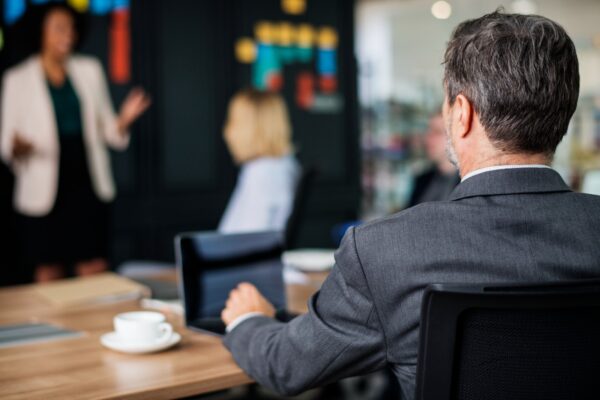The term “strategic branding” often sounds complicated, leaving many entrepreneurs feeling uncertain about where to start. But fear not – strategic branding, though nuanced, is not an insurmountable challenge. In fact, it’s a powerful tool that can shape the success of any business.
In this guide, I’ll demystify strategic branding, making it accessible and understandable for everyone. Whether you’re launching a startup or managing an established company, understanding the core concepts of strategic branding is essential in today’s competitive market.
By the end of this article, you’ll have the knowledge and confidence to create your own effective brand strategy. Let’s simplify the complex world of strategic branding together, empowering you to chart your business’s course with clarity and purpose.
What is Strategic Branding
Strategic branding serves as the intricate process of giving life to a brand. It involves crafting a distinct image, defining a tone of voice, and effectively communicating the brand’s message and core values to its audience.
At its foundation lies a well-thought-out strategy, a meticulously planned roadmap aimed at achieving the ultimate goal of branding. This comprehensive brand strategy is the linchpin that propels your company toward long-term success and evolution. Strategic branding meticulously scrutinizes each component of the journey, ensuring that every aspect contributes to setting your brand apart from the competition. It recognizes that beyond an exceptional product, a recognizable persona is the initial stride towards cultivating a dedicated customer base.
Incorporating strategic branding means catering to all the requirements of your target consumers, understanding their needs, emotions, and evaluating the alternatives offered by your competitors. It transcends mere product development or market research; instead, it involves forging a deep connection between the essence of your business and your customers. It’s not confined to just your logo or name; it encompasses the overall ambiance and character of your brand. This holistic approach signals to potential audiences that yours is the brand they have been searching for.
Visual branding vs. Strategic Branding
Every single company uses visual branding.
A brand without a logo will be difficult to come across, but those without a marketing plan are plentiful.
These are the “Blind Brands” that I refer to.
roaming aimlessly in any direction without ever identifying their destination, much less making any preparations for it.
They put on the right clothes to entice suitors, but without a plan to interact with, connect with, and support those suitors, nothing sticks.
The early brands in the 1820s embraced visual branding as a standalone approach.
Back then, all it took to stand out was to stick a brand on a goods container.
Today’s world and consumers are two quite different animals.
They have high expectations, so if you’re hoping that the elegance of your visual identity will sweep them off their feet, be ready for the eventual thud.
Why brand strategy is so crucial
We must begin with brand strategy when answering the question “What is strategic branding?”
Modern branding is built on a foundation of brand strategy.
It’s a strategy for a brand to get the results it wants, but it goes beyond that.
Strategic branding gives a brand life in the minds of its consumers, causing them to see it as a living thing and subliminally interact with it.
A brand that resonates with you will have a core value, a distinct personality, a recognizable tone of voice, and a message that addresses your emotional needs.
Visual branding has a purpose.
Its responsibility is to build brand recognition in order to link consumers with the living thing.
If all you have is a visual brand and nothing more, you’re on a lonely road leading to nothing.
Different Branding Techniques
Branded House
There is a single brand that serves as the umbrella for all of the business’s goods and services. They are advertised using the same general positioning and marketing approach.
Apple is the ideal illustration of a branded residence.
Although each of their devices has a unique brand name (i.e., MacBook, iMac, iPhone, iPad), they are all part of the larger brand known as Apple.
House Of Brands
A house of brands is a broad parent brand that contains several subsidiary brands, each of which operates independently and adopts its own business practices.
These distinct brands each have their own visual identities, target consumers, positions, and message schemes.
Unilever is the ideal illustration of a house of brands.
Despite having over 400 brands under its umbrella, including Dove, Lynx, Lipton, and Lux, Unilever maintains a distinct brand identity, market position, and message approach.
Although the brands are separate, they need to cooperate from the standpoint of the internal brand (beliefs, values, etc)
Components of Brand Strategy
Internal branding
The internal brand serves as the brand’s compass and is a crucial component in giving the brand a human identity.
It covers aspects of the human condition including values, goals, and ambitions.
Audience Persona
The profile of the audience a company wishes to interact with is known as the audience persona (buyer persona/buyer avatar).
In-depth information that goes beyond demographics and psychographics to identify pain spots and emotional connections makes up a successful character.
Competitive Analysis
A thorough examination of the competition gives the brand a comprehensive understanding of the alternatives available to its target audience.
This research reveals the competitors’ techniques for differentiating themselves and identifies the advantages and disadvantages of their rivals.
A thorough research ought to provide you with enough details to be able to gauge how the target audience thinks about their current alternatives and where they could need more or alternative options.
Analyses of Differentiation
The foundation of the positioning strategy and the entire brand position is a differentiation strategy.
By providing its common audience with something unique compared to all the other possibilities on the market, it seeks to differentiate the brand from its rivals.
The difference between a brand that is remembered and one that is forgotten may be attributed to a distinctive differentiating approach.
Human Brand Persona
For a brand to connect, more than just a visual identity is required.
For the brand to connect with its audience on a genuine human level, it must become a living, breathing human being.
Given the human personality at its disposal, a brand with a human character has a far higher chance of connecting with its audience.
Voice tone
The manner you interact with your audience is just as crucial as what you say, and using the perfect tone of voice enables companies to communicate at the appropriate frequency.
The audience will enjoy and relate to a tone of voice that wants to aid them in that time, whether it is intelligent, funny, professional, or comforting.
Tagline
The slogan is more than simply a clever phrase.
It is a brand element with a purpose, and that purpose is to collaborate with the logo to increase brand recognition.
The tagline serves as a shortcut in the audience’s mind, and the ideal tagline may aid a business in securing its place there.
Core Message Framework
The “core message,” as most brand architects define it, is not the strategy you use to engage a crowd.
Traditional core messages are condensed messages that summarise the brand offering, but they are ineffective as tools for directing continuing communication.
The core message framework explains all the crucial components of the brand that the audience must comprehend in order for the brand to connect with all of the essential demands of the audience.
Storytelling Framework
A good marketing narrative may captivate an audience and make them want to hear more. Stories are 22 times more memorable to us as humans than facts are.
Who the narrative is about is the most important component of a great brand story.
It’s not about the company’s founders or brand. The focus is on the audience, their difficulties, and their road to achievement.
Branding and Identity
Due to its visual components, the brand identity system (also known as the visual brand) is part of the brand that can be recognized the easiest.
Because we are visual creatures, complex information is harder for us to remember than simple ones.
Even while it’s important for brand memory, the brand requires much more to connect.
Utilizing The Contemporary Brand Strategy Template
Before the digital age, photographers had to rely on traditional film cameras and darkrooms to develop their photos. To capture a memorable moment, they needed:
- A camera: Choose the right type for the intended photography.
- Film rolls: Select based on lighting conditions and effects.
- Darkroom equipment: Develop film using chemicals and specialized tools.
- Patience and skill: Compose carefully, pay attention to detail during development.
- Lighting and composition knowledge: Master techniques for impressive shots.
Failure to consider any of these elements often resulted in poorly developed or unimpressive photos. Just as with travel preparations or building a successful brand, a meticulous checklist was crucial for photographers to achieve their desired outcomes and create stunning, memorable images.
Create A Personal Compass
Before setting out to accomplish its objectives, your brand must know where it is heading.
As here is where the brand’s intrinsic human features, such as its personality, come to life, it is here that the human brand is born.
Aspirations, commitments, behaviors, and beliefs
Discovering the “Why” behind your brand is made easier with the use of an internal compass.
The brand’s purpose is more than only profit.
This reveals who your brand assists and the difference that assistance makes in their life.
When you are absolutely certain of the purpose behind your brand, you can create a set of tenets that are reliable.
You can determine the influence you want your brand to have and how you see it developing in the future once your core principles are established.
The mission then sets out the strategy for how your brand’s commitments to itself, its clients, and the larger world will help it realize its vision.
The principles that your brand upholds during its daily operations may also be used to describe how it will act in the market.
Determine Your Target Position
Your internal compass will provide you with a strong foundation and internal guidance for your brand’s future and the goals you have for it.
The way you want your brand to be remembered depends on the place you’ll have in their minds, thus that is the following thing that has to be checked off.
Your audience will remember you if you think creatively and use an effective plan.
Three of the key components—which we just discussed—combine to form the positioning strategy.
Your Clientele
You’re Rivals
Your Unique Selling Point
The only way to choose a successful target position is to have a thorough grasp of your audience and your competition.
These essential components help you identify the crucial features that might result in a distinctive differentiator, such as Likes, Dislikes, Pain Points, Emotions, Strengths, Weaknesses
The holes in the market that your rivals have failed to fill are revealed by a good awareness of the competitive environment.
However, these flaws often aren’t sufficient on their own to set your business apart from the competition.
To actually fill the gap and create a really original concept, creative thinking is often required.
It may turn an average brand into an amazing brand if it is imaginative and distinctive enough.
Create a Persona for Your Brand
As I said before, in 1820, a distinctive visual identity would have been sufficient to distinguish your company, but now there are literally billions of logos.
Since 1820, a lot has happened in the world, and the connection between brands and customers has altered significantly.
In fact, the past 30 years have seen the greatest transformation in the history of the interaction between companies and customers.
Modern consumers (headed by the Millennial generation) have far higher standards for the brands they pick.
If your brand isn’t engaging with your consumers on a human level, it won’t even cross their minds.
In order to connect with their audience on the front lines of the digital world, brands of today must adopt human traits from a personality to a tone of voice.
Brands may use archetypes to first pinpoint the personality of their target market and then a personality created to speak to their goals.
Archetypes may be used as the basis for developing ideas, attitudes, beliefs, and views, which can be expanded upon to really engage the audience on a conversational and human level.
Although what you say to your audience has always been essential, in today’s hypersensitive world, it has never been more crucial to consider how you express it.
Create a brand identity to foster human interactions.
Establish an efficient route
You need the resources to take your brand from obscurity to the brand of choice after you have established your internal compass, market position, and brand character.
Strong communication is the most effective approach to doing it.
Your audience needs to understand who you are, why you’re communicating to them, what you do, how you do it, what makes what you do different from what everyone else does, and why they should care.
In order to create a focused single paragraph of text for a typical core message, you must remove 80% of that content.
What happens to all of that additional data, though?
What do you do with it and where does it go?
If you’re like most firms, you may eventually get around to discussing some of it on your website or in a few sporadic social media posts.
You cannot simply let this knowledge slide down the back of the sofa.
When it comes to making purchasing choices, your audience will reference this crucial information.
The Front Line Is The Brand Communication Strategy
To make sure you consistently express what people need to know again and again, your brand requires a core message structure that includes all of these important bits of information.
But understanding the message you need to convey is just half the battle.
Delivering your words via a tale can help your audience relate, engage, and be taken into what you have to say.
Your personal awareness of the life they lead, the issues they face, the obstacles, pain spots, emotional connections, and the influence all of this has on their lives will come from appropriately establishing your audience’s character.
You’ll also be aware of the directions they must take, the challenges they must face, and the nature of their success.
Your target audience wants to hear this tale.
They will be emotionally connected and will relate to what you have to say if they recognize themselves in the tales you tell.
This is how you convey a message clearly.
Execute Your Plan
It’s time to launch your brand strategy when it has been established.
Here, your brand takes on a visual identity that serves as the shopfront and point of visual contact for your company.
But this is just the start.
100% of businesses try to attract customers’ attention by aesthetic attractiveness, but only a very tiny fraction of those that succeed in doing so have anything to support building relationships with customers and achieving their ultimate objectives.
From here, resonance is entirely dependent on execution.
A human personality with a tone of voice and a consistent message delivers an interesting tale if your company’s identification is distinctive enough, your slogan memorable enough, and both go back to a brand that has an idea, differentiation, and position at its foundation.
Only then does your brand have a chance of taking root in the minds of your target market?
It turns into a consistency game when each of these crucial components is in line with the audience.
delivering the same message repeatedly using every combination imaginable
If the brand is given the chance to fulfill its promises to the client, the internal brand compass emerges and prospects are developed into devoted followers.
Final Thoughts on Strategic Branding
Whether you’re embarking on the journey of launching a new brand or you’re a seasoned business aiming to connect with fresh audiences or venture into unexplored markets, strategic branding stands as the cornerstone of your success. It not only charts the course for your branding objectives but also serves as a pivotal element in ensuring your business thrives. Delay no further; dive into your strategic branding process right away and pave the way for your business triumph.






![What Is An Endorsed Brand [Examples, Benefits & Disadvantages]](https://naumandigital.com/wp-content/uploads/2023/02/20-600x400.jpg)


![What is Sustainability Branding [Complete Guide]](https://naumandigital.com/wp-content/uploads/2023/10/WhatsApp-Image-2023-10-18-at-3.58.50-PM-600x400.jpeg)